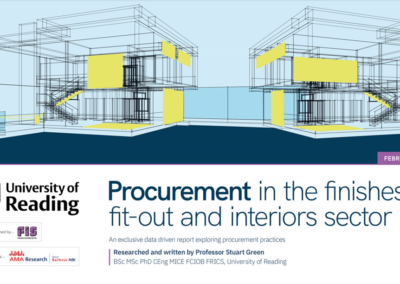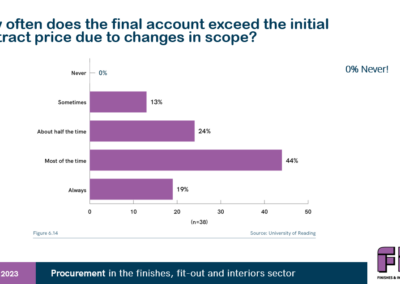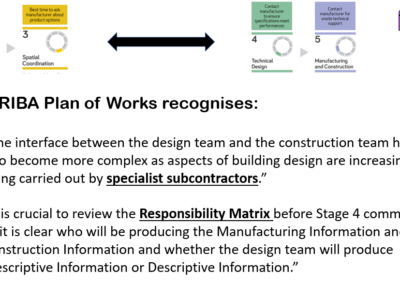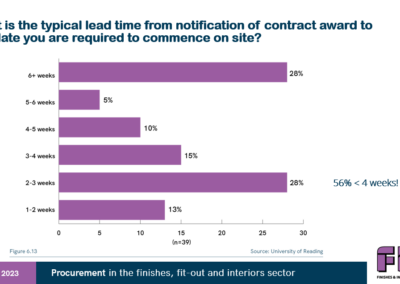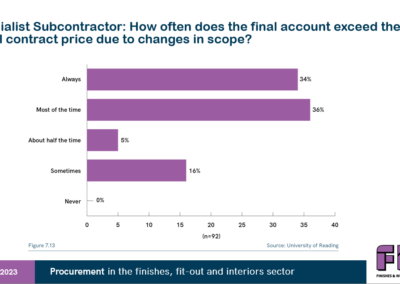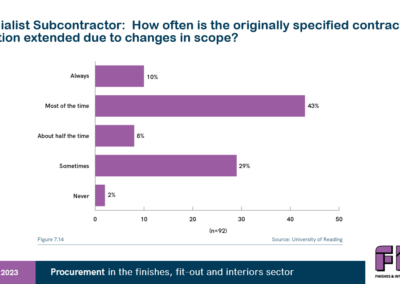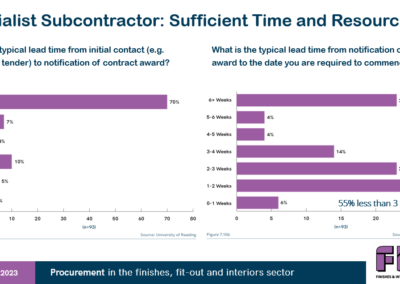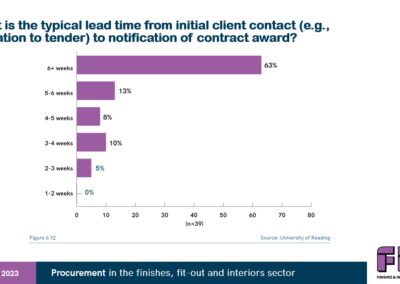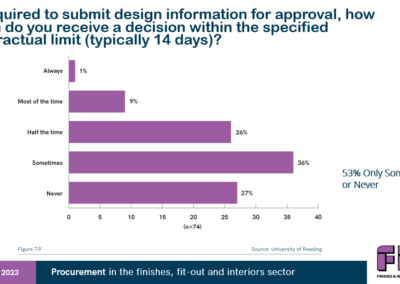Empowering the Responsible No
Every business has a legal responsibility to ensure reasonably foreseeable business risks are addressed. But what do you do when the risk you are being asked to absorb is too great, the request moves you outside of what you are insured for, the contract too onerous or you are being asked to do the impossible? Sometimes the right thing to do is to say No, it isn’t easy, but the alternative could be catastrophic!
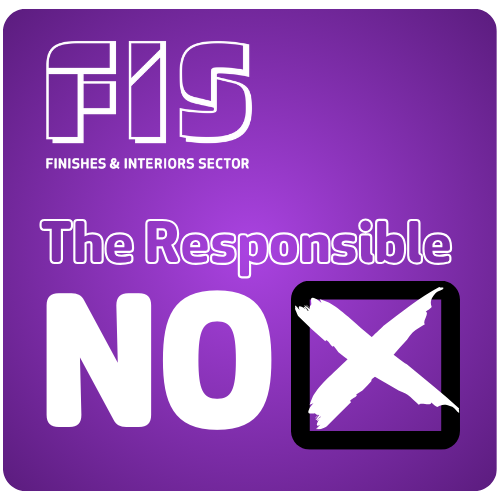
Introducing the Responsible No
In any conversation about competence, the importance of deploying “No” has been repeatedly raised – yet No is not a word people want to hear in construction. Ultimately competence and capability require you to know your limits and ensure that all reasonably foreseeable business risks can be managed and addressed.
If we don’t clarify, qualify and draw the line we take more risk than is reasonable, assume responsibility for issues outside of our control and sign up to damages and delays that we can’t cover.
Following the publication of the Reading Report into Contracting and Procurement Practices in the Finishes and Interior Sector, the FIS is focussed on Empowering the Responsible No.
You can read Iain McIlwee, FIS CEO’s blog that introduced the Responsible No Campaign here.
I firmly believe the next chapter of construction can be a new dawn for the specialist, but it is beholden on a professional, strong and well explained ‘No’ – if enough do this we can ensure that you will be heard and we consign unacceptable asks to the past.
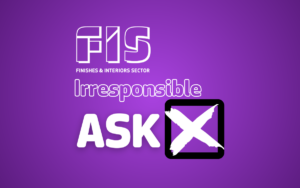 An industry agreed starting point – The Irresponsible Ask!
An industry agreed starting point – The Irresponsible Ask!
A good place to start is Construction Leadership Council has come out strongly to condemn contract amendments, raising legitimate concerns about undermining the insurability of products if risk is not clear or irresponsibly placed. They have also endorsed Build UK’s recommendations on clauses that should never be presented.
Fitness for purposeDo not include a ‘fitness for purpose’ standard of care for design (except in the process sector). Unquantifiable risksDo not include delay/loss and expense risk where not reasonably ascertainable for dealing with asbestos; fossils, antiquities and other objects of interest or value; unexploded ordnance; and the carrying out by statutory bodies of work in pursuance of their statutory obligations in relation to the works, or the failure to carry out such work Specified PerilsDo not include that ‘Specified Perils’ (as defined in JCT) will not give rise to extension of time where caused by the (sub-)contractor
|
Breach of contractDo not include a blanket indemnity for breach of contract Uncapped liabilitiesDo not include uncapped (sub-)contractor liability (save for certain aggregate cap carve-outs such as fraud, misrepresentation, personal injury/death, wilful default) Performance securitiesWhere the following forms of performance security are required:
|
Other Unacceptable Amendments
Extending final date for payment and the time limit for issuing a pay less notice
Excluding relevant events and relevant matters
Penalties for late or non-delivery of warranties
Disrupting the proper process for releasing the retention
Delay clauses disproportionate to the contract amount
FIS has produced guidance that is designed to support members in recommending the use of an unamended contract. Where this is not possible, we have seperate guidance recommending a position on for onerous terms that are often seen.
It is the view of the CLC, that standard form building and engineering contracts and professional services contracts issued by contract-producing bodies, should be used by clients with no amendments, except where necessary in the context of project-specific risks and relationships.
The CLC believes that onerous amendments make contracts unviable, reduce competition, increase risk and lead to unnecessary legal costs required to review legal liabilities created by the amendments.
The CLC’s Professional Indemnity Insurance Working Group has identified that too often standard form contract terms are being amended, to include liabilities and obligations that are disproportionately onerous for the nature of the work ….
This means that if a client seeks to claim for loss or damage, it cannot be relied upon that it will be settled by the PII insurers, and the consultant/contractor potentially faces financial ruin, and the client left with a claim that cannot be recovered. This is not in the best interest of any party.
Implementing the Responsible No: Suggested Actions
Identify It
Never sign a contract that you have not read or do not understand. In the contract are you duties clearly defined and reasonable? Are the limitations of any design responsibly clear (e.g. interfaces and fixing details)? Does this align to your insurance provision? Is there a clear change control process in place to deal with any unforeseen issues? Have had information with enough time to process? Is it to the right level of detail? Are you confident time is allowed for co-ordination with other packages?
Challenge It
Don’t ask, don’t get. If you are confronted with an irresponsible ask, raise it with the client. As above the Regulations require “suitable time and resource”, I am not insured to…, we are not competent to…, we didn’t design that bit are are legitimate concerns to raise and the start of a negotiation.
Report it
We can’t always influence an individual tender, but we can start to identify and challenge bad behaviour when it is reported to us. We can take the conversation outside of the immediacy of that project – if we can’t get them to see sense this time, we can try and ensure that we are not repeating mistakes and poor behaviour on future works.
FIS has a Contract Whistle Blowing Service here. We ask members to report amended public sector contracts and any unacceptable clauses.
The Responsible No Campaign is all about identifying risk and encouraging the right conversation early rather that the wrong one late.
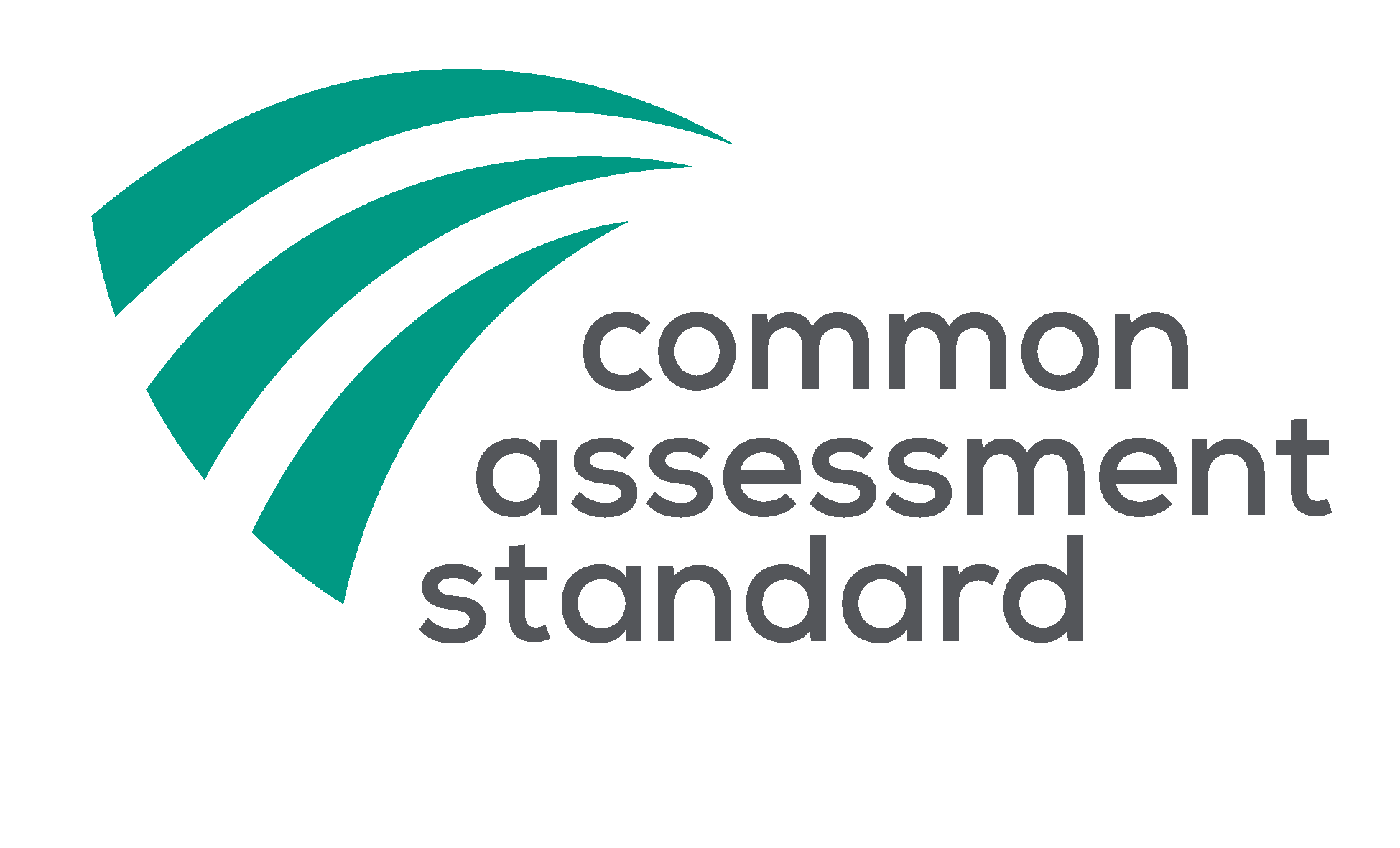
Help eliminate waste in Duplication of Pre Qualification Questionnaires
As part of the Responsible No Campaign, FIS is also looking at the current failure for wholesale adoption of the Common Assessment Standard. FIS has, since it’s outset supported the introduction of the Common Assessment Standard. This new approach was launched in 2019 by Build UK and the Civil Engineering Contractors Association following concerns that the proliferation of suppliers and duplication of effort and support associated with pre-qualification schemes. Through it’s introduction, the claim was that this approach will help the industry to £1bn by eradicating duplicate fees and inefficiencies.
Supporting the Responsible No

FIS Contract Review Service
The subsidised FIS Contract Review Service provides pro-active support that will seek to identify onerous contract clauses before work starts, thus seeking to avoid contract issues further down the line.

FIS Guidance on Onerous Clauses
FIS has produced guidance to support members in identifying and responding to onerous contractual terms. Prepared for specialist contractors, it is a summary of the typical risks and industry recommended compromises to look out and negotiate when engaging in a contract with clients or main contractors.

FIS Guidance on Design Liability
Design Liability can be a particularly contentious area of risk and clarity of scope essential. In the FIS Legal and Contractual Toolkit there has been specific guidance produced to help members understand design liability, insurance and how requirements may be covered or even hidden away in contracts

Clear Processes Help Identify and Facilitate a Responsible No
The FIS PPP Quality Framework and Integrated Management System (IMS) have been developed to help members isolate risk and implement tried and proven methods of streamlining their company for the benefit of their business and its stakeholders. These tools helps set the parameters for FIS members to identify when it is appropriate to implement a Responsible No, but also to articulate where and why an Ask is Irresponsible or Impossible.
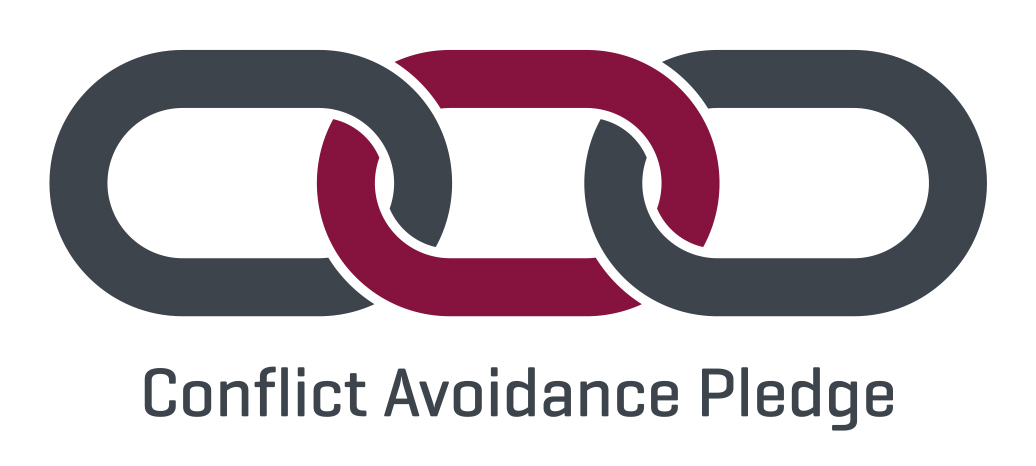
Conflict Avoidance Process (CAP)
CAP is a contractual mechanism, supported by FIS, which helps parties to avoid getting embroiled in pro-longed and damaging disputes. Where disagreements begin to develop, CAP enables parties to address and resolve matters early, collaboratively and inexpensively.
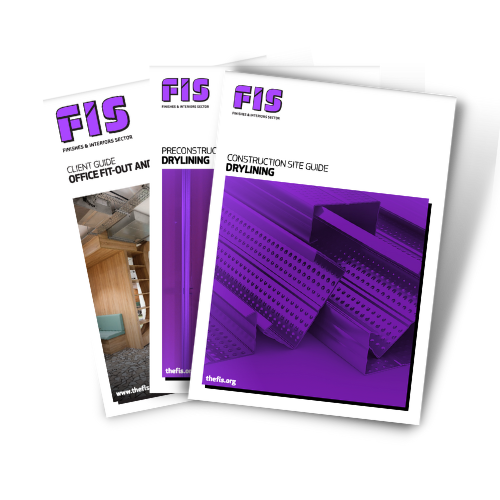
FIS Best Practice Guidance
FIS is built on the collective wisdom of the community, which it harnesses in an extensive library of publications and guidance notes that support specifiers, end users, designers, suppliers and contractors involved in the Finishes and Interiors Sector. Best Practice Guides and Site Guides feature top tips, key challenges and detailed checklists that can support compliance and quality management systems.
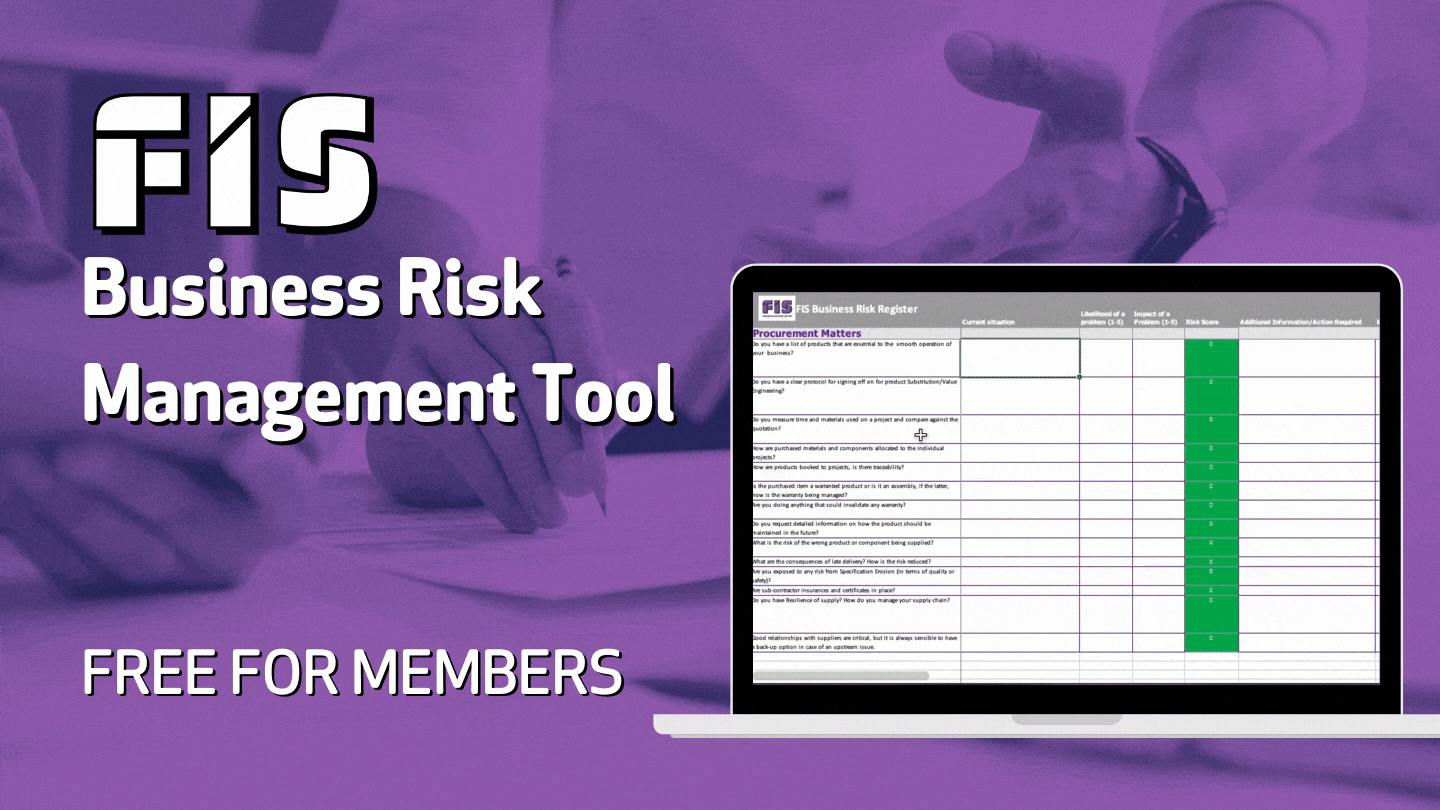
FIS Business Risk Management Tool
FIS has produced a Business Risk Management Tool to support contractors and help them adopt a structured approach to understanding risk and reducing uncertainty. The tool identifies over 120 common risk areas for contractors against the categories including Business Management, Contractual, Financial, Quality, H&S and Procurement, providing a mechanism to score and rank risk and advice on mitigation and management.
A risk management matrix ranks risk in term of probability of an event occurring and the severity of the impact should the event occur. It can be used to identify and prioritise activity so that a contractor can then make informed business decisions and improve their resilience.

